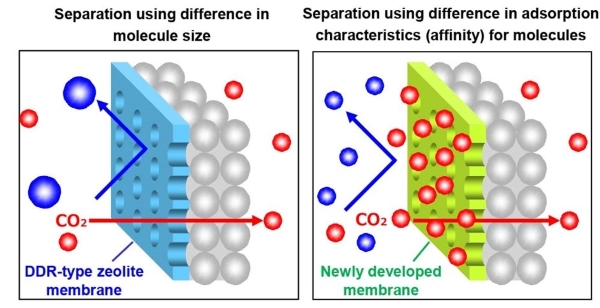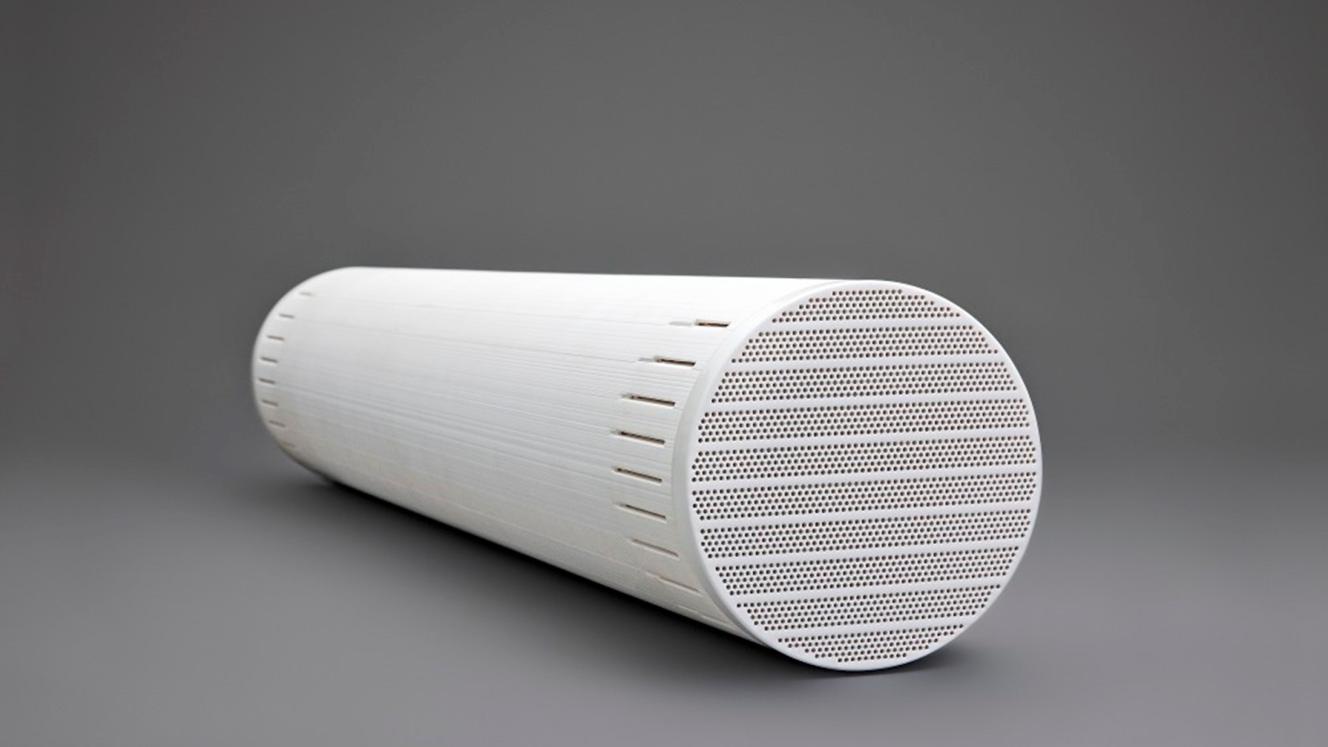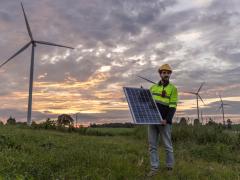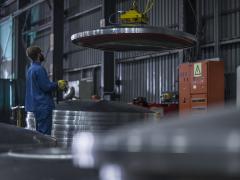NGK has been successful in developing a DDR-type zeolite membrane, which is one of the world’s largest ceramic CO2 separation membranes. Demonstration testing of these membranes is currently in progress with a view to using them for separating CO2 from associated gas and natural gas. Amid a global shift towards carbon neutrality, there is a growing social need for CO2 separation and recovery technology for industrial exhaust gas emitted from plants.

The conventionally developed DDR-type zeolite membrane can be used for CO2 separation using differences in molecule size. It is easily able to separate CO2 in associated gas and natural gas, since methane, their major component, has a larger molecule size than CO2. On the other hand, in industrial exhaust gas, the major components are nitrogen and oxygen, which have molecule sizes similar to CO2. Therefore, it is difficult to precisely separate CO2 from industrial exhaust gas using a DDR-type zeolite membrane. The newly developed CO2 separation membrane for industrial exhaust gas makes use of a difference in adsorption characteristics (affinity) for molecules to separate CO2 from nitrogen and oxygen, which increases CO2 separation factor. In testing uses simulated industrial exhaust gas, the new membrane was confirmed to have approximately five times the CO2separation factor of a conventionally developed DDR-type zeolite membrane. Using the characteristics of ceramics, which can be used under harsh conditions, the Company is working to increase the separation factor even further for high temperature industrial exhaust gases, aiming for commercialization in 2030 after demonstration testing.














